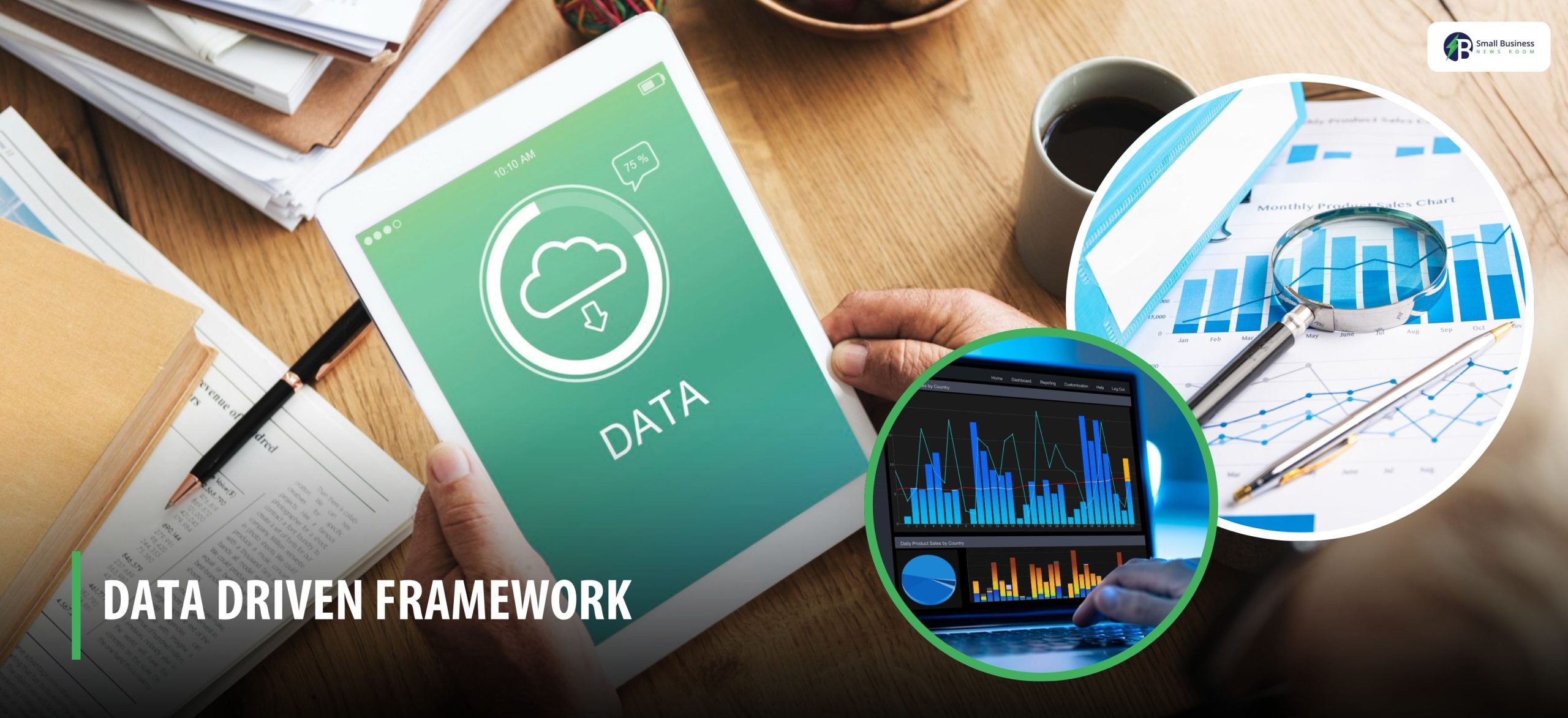Table Of Contents
- Setting the Stage
- Preparing the Excel Data
- Organizing Your Excel Sheets
- Tips for Clean Excel Files
- Reading Excel Data with Apache POI
- Get Apache POI on Board
- Implementing Data Driven Testing
- Fetching Data from Excel
- Using Data in Test Scripts
- Running Data Driven Tests
- Test Execution Strategies
- Generating Test Reports
- Maintaining Data-Driven Test Suites
- Keep It Updated
- Version Control
- Document, Document, Document
- What Are The Benefits Of Data Driven Testing Through The Data Driven Framework?
- More Test Coverage
- Less Maintenance Hustle
- Reusable Test Scripts
- Easy Bug Hunting
- A Quick Peek at LambdaTest
- How can I handle multiple test cases in a single execution using data from Excel?
- Overview Of The Data-Driven Framework
What Are the Best Practices for Data Driven Framework with Excel and Selenium Java?
Last Updated on: September 16th, 2025
Hey there, testing enthusiasts! In any software quality assurance, Quality assurance is as important as the scale of the product. And in most teams, it works inversely proportional.
As we increase the complexity and scale of software products, it becomes harder and harder to catch bugs and ship faster.
Data Driven Testing addresses this exact problem statement, enabling you to not only test better but also ship the product faster than ever before.
In this blog, we’ll explore Data Driven Testing methodologies and best practices on how you can work with Excel and Selenium Java for automation testing needs.
This blog is for all ranges of QA professionals, from novices to experts. Hope it helps you solve the problems you face with Data Driven testing along with Selenium Tests.
Setting the Stage

Before we dive into the Data Driven Testing universe, let’s make sure our testing gear is all set and ready.
Here are all three things you need to get started with.
- Selenium WebDriver: Selenium is like the Swiss army knife of web automation, so you’ll need it in your toolkit. If you haven’t already, set up Selenium WebDriver in your development environment.
- Apache POI: Apache POI is your Excel buddy. It’s a Java library that can read and write Microsoft Office files, including Excel. You’ll want to get cozy with Apache POI for Excel handling.
- Test Script: Don’t forget your trusty test script! Have one prepared for automation—it’s the star of the show.
With these essentials in place, you’re ready to explore the wonders of Data Driven Testing.
Preparing the Excel Data

The first step in Data Driven Testing is all about setting up your test data. And what better place to do it than in Excel? Here’s the lowdown on getting your Excel data prepped and ready.
Organizing Your Excel Sheets
Excel spreadsheets are like the blueprint for your data-driven tests. How you structure them matters. Here’s a simple example of how to organize your test data in Excel:
| Test Case ID | Username | Password | Expected Result |
| TC001 | user1 | pass123 | Login Success |
| TC002 | user2 | invalid | Login Failure |
| TC003 | user3 | pass456 | Login Success |
Each row represents a test case, and the columns contain parameters like Username, Password, and Expected Result. This organized format is your ticket to data-driven success.
Tips for Clean Excel Files
- Headers Matter: Keep your Excel sheet headers consistent and crystal clear. It makes data mapping easy.
- No Empty Rows or Columns: You must always ensure that your Excel files are tidy. If you leave any empty rows or columns, it can lead to confusion during testing.
- Data Validation: When you are implementing data validation rules, you are actually ensuring the data you enter is accurate and within bounds.
- Named Ranges: Use named ranges to make data retrieval in Excel a walk in the park.
With your Excel data looking sharp, you’re ready for the next step.
Reading Excel Data with Apache POI
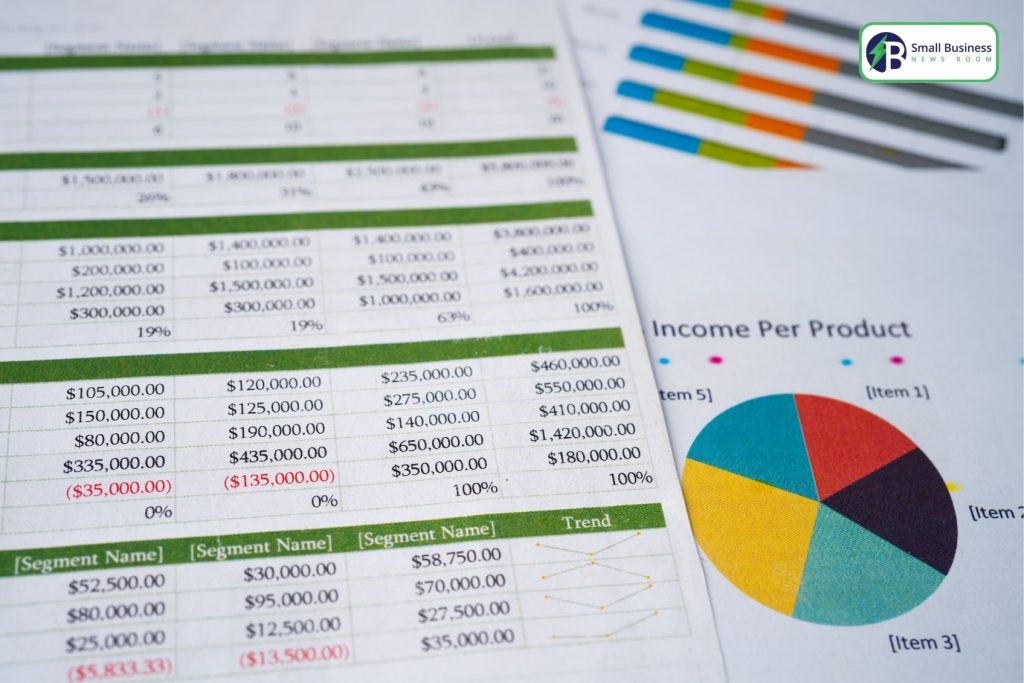
Now that you’re an Excel pro, let’s see how Apache POI comes into play.
Get Apache POI on Board
Add Apache POI Dependency: Start by adding Apache POI to your project. You can do this by including the required JAR files in your project’s build path or by using tools like Maven or Gradle.
Create Excel File Object: In your Java code, create an instance of the Excel file you want to read from. Something like this:
FileInputStream file = new FileInputStream(new File(“testData.xlsx”));
XSSFWorkbook workbook = new XSSFWorkbook(file);
XSSFSheet sheet = workbook.getSheet(“Sheet1”); // Replace “Sheet1” with your sheet name
Read Data from Excel Cells: Now you can access and read data from specific cells in your Excel sheet, like so:
String username = sheet.getRow(1).getCell(1).getStringCellValue(); // Row 1, Column
String password = sheet.getRow(1).getCell(2).getStringCellValue(); // Row 1, Column
Handle Exceptions: Be sure to catch exceptions that might pop up when dealing with Excel files, like FileNotFoundException and IOException.
With these steps, you’ve got the keys to the Excel kingdom.
Implementing Data Driven Testing

Okay, we’ve got the data from Excel in our hands. Now, let’s put it to good use in our Selenium Java test scripts.
Fetching Data from Excel
To get the data from Excel into your Selenium test scripts, you’ve got to do a little fetching. Here’s how:
String username = sheet.getRow(testCaseRow).getCell(usernameColumn).getStringCellValue();
String password = sheet.getRow(testCaseRow).getCell(passwordColumn).getStringCellValue();
In this code, testCaseRow is your current test case’s row, and usernameColumn and passwordColumn are the column indices.
Using Data in Test Scripts
Now that you’ve got your hands on the data, it’s time to put it to work. Let’s say you want to use the data to perform a login test:
// Fire up the browser
WebDriver driver = new ChromeDriver();
driver.get(“https://example.com”);
// Find the username as well as password fields and fill them in
driver.findElement(By.id(“username”)).sendKeys(username);
driver.findElement(By.id(“password”)).sendKeys(password);
// Click that login button
driver.findElement(By.id(“login-button”)).click();
// Check the expected result
String actualResult = driver.findElement(By.id(“result”)).getText();
Assert.assertEquals(actualResult, expectedResult);
// Close the browser
driver.quit();
In this example, you’re using the username and password values from Excel to fill in the login form. After that, you perform the login action and verify the expected result. Simple, right?
Running Data Driven Tests
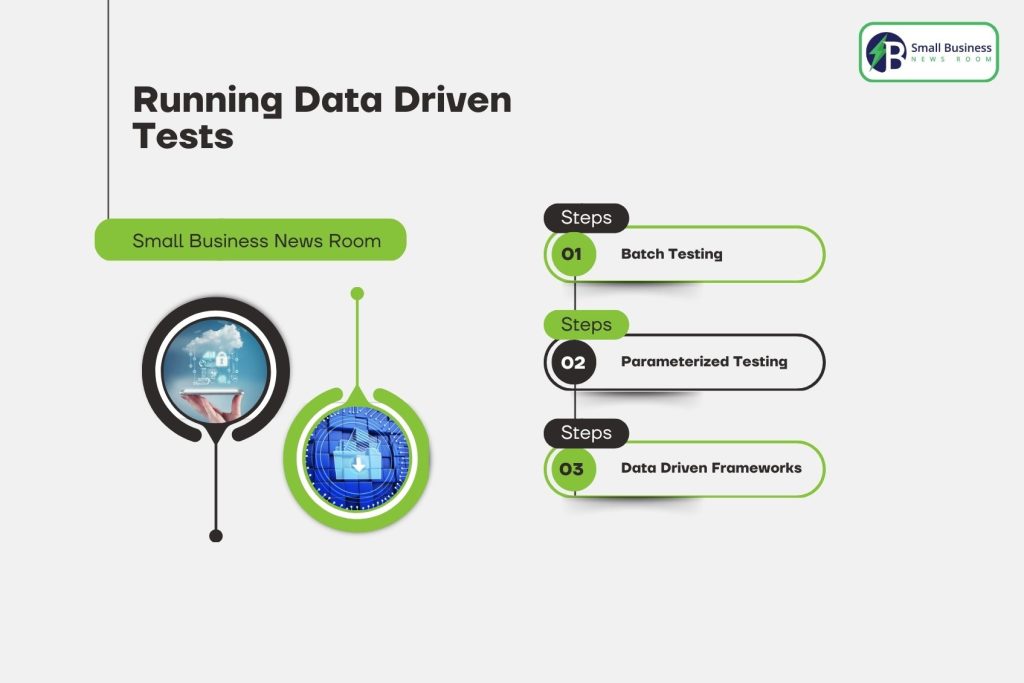
Now that you’ve got your data-driven test scripts in place, it’s showtime! But how do you run these tests efficiently? Let’s dive into some strategies.
Test Execution Strategies
- Batch Testing: With batch testing, you go through each row of your Excel sheet and run the same test script with different data sets. It’s great for testing multiple flavors of the same functionality.
- Parameterized Testing: Parameterized testing frameworks (like TestNG or JUnit) let you run the same test script multiple times with different parameters. Perfect for comprehensive testing.
- Data Driven Frameworks: For complex apps, consider building data-driven frameworks that handle data fetching, test execution, and reporting. It’s the pro-level stuff.
Generating Test Reports
But how can you keep tabs on your results? Well, in that case, you will have to generate some reports. Thereare popular test frameworks such as TestNG ir JUnit that can offer you built-in reporting features.
Moreover, you can also integrate some third party reporting tools of your choices in order to cusotmise your reports.
These strategies can help you to efficiently run and manage your data-driven tests, ensuring thorough testing of your application.
Maintaining Data-Driven Test Suites
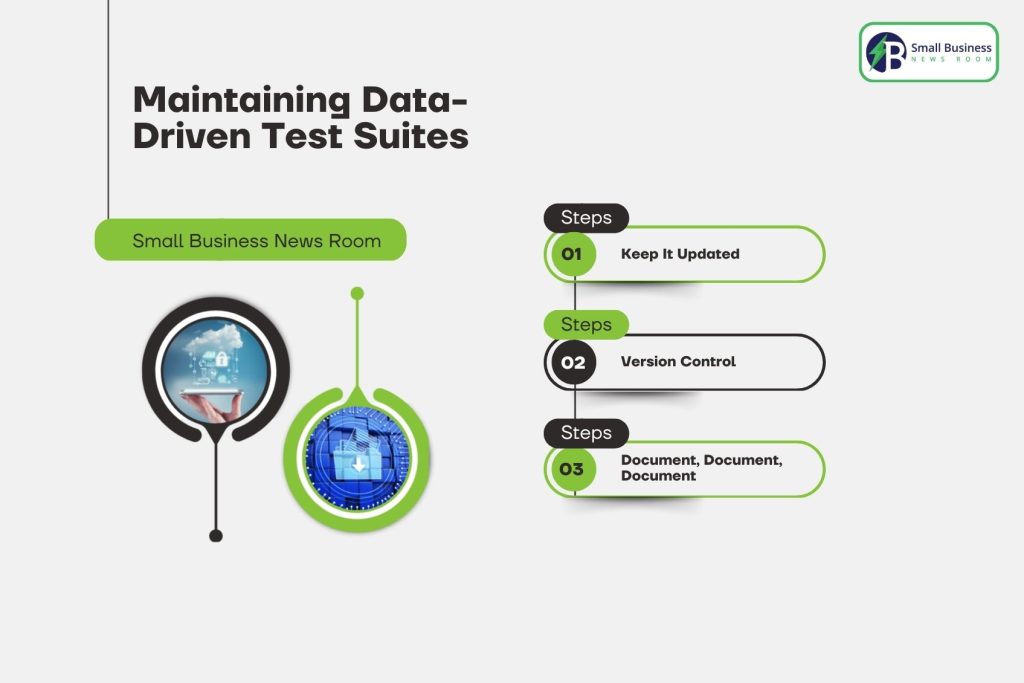
As your application evolves along with your test data and test cases. This, it is very necessary to establish different practices which can help you to maintain the data-driven test suites.
Keep It Updated
You must keep your excel sheets updates on a regular basis. You can also tweak your test scripts along with the pace of changes in the application. Moreover, maintenance should be a regular thing for you, to keep the test sharp!
Version Control
You must always try to implement version control for your test scripts and test data. This way, you can track changes. Moreover, it will also allow you to roll back to previous versions if things go south.
Document, Document, Document
Maintain documentation for your data-driven test suites. Note down the purpose of each test case, the data used, and any special quirks. This documentation is gold for new team members joining the testing crew.
Related: How Has Coding Changed Over the Past 35 Years?
What Are The Benefits Of Data Driven Testing Through The Data Driven Framework?
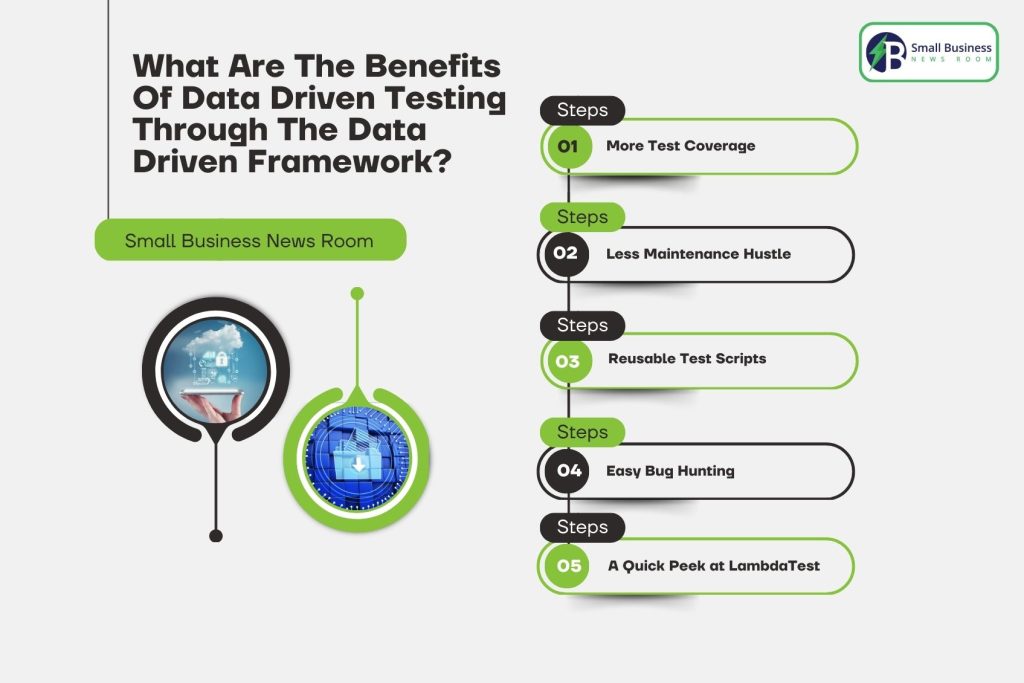
Now, let’s take a moment to appreciate the awesomeness of Data Driven Testing.
More Test Coverage
Data driven testing lets you run the same test script with different data sets, giving your application a thorough workout. You’re like a superhero with extra powers!
Less Maintenance Hustle
Centralizing test data in Excel makes updating and maintaining test cases a breeze. No more digging through code to make small changes.
Reusable Test Scripts
With Data Driven Testing through the data driven framework, your test scripts become versatile workhorses. You can reuse the same script for multiple test cases, making your testing efforts super efficient.
Easy Bug Hunting
Troubleshooting becomes a piece of cake with Data Driven Testing through the data driven framework. If a test fails, you can pinpoint the exact data set causing trouble, making debugging a walk in the park.
A Quick Peek at LambdaTest
Before we wrap things up, let’s give a shout-out to LambdaTest. It’s a cloud-based cross-browser and cross-device testing platform that can complement your Data Driven Testing through the data driven framework works.
LambdaTest comes armed with some cool features:
- Parallel Testing: Say goodbye to waiting! You can now run your Selenium test scripts at the same time on different browsers and operating systems.
- Integration with Selenium: It plays nicely with Selenium. This further expands your test coverage to various browser and OS combos.
- Real-Time Testing: LamdbaTest can help you get real-time access to different browsers. This way, you can interact with your app as if it’s right in front of you.
- Test Logs and Screenshots: LambdaTest captures two things in detail. One is the test logs during the test runs. And the other one is screenshots. This makes your bug hunting a breeze.
- CI/CD Integration: LambdaTest helps to integrate with CI/CD tools to ensure your tests stay in sync with your development pipeline. These tools include:
- Jenkins,
- Travis CI, and
- CircleCI,
Integrating LambdaTest into your Data Driven Testing strategy through the data driven framework as it can supercharge your testing efforts and make your life easier.
How can I handle multiple test cases in a single execution using data from Excel?
You can handle multiple test cases in a single execution using data from Excel! Pretty easy! You just have to set up a Data Driven Testing through the data driven framework.
For this, you need an automation tool and a dedicated library. These can read test data from an Excel file and feed it into your test scripts.
Overview Of The Data-Driven Framework
Prepare your test data: Firstly, you have to organize your test inputs and expected results in an Excel spreadsheet. Each row can represent a separate test case.
Develop a utility script: After that, write a utility function that reads the data from the Excel file and stores it in a format your testing framework can use, like a 2D array or a list of objects.
Create a parameterized test script: Once done, you can write a single test script that accepts parameters for the input data.
Execute the test loop: The test script will iterate through each row of the Excel data, executing the same test logic with different inputs for every iteration.






